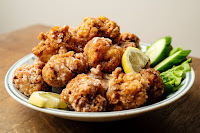"Hey! We have something like that !" Part 3

In this edition we look at two different dishes, with the same name: Adobo. If you are Latin-X then you likely have had a form of adobo including chilies and tomatoes cooked to what tastes like perfection. It is worth noting that Mexican adobo and Cuban adobo are not exactly the same but could be called siblings, with small variants by region, city and even individual families. However, many people are still surprised to find out that the Caribbean-Central American adobo, is not the only adobo. In fact Filipino adobo in all of its tangy salty glory is basically the national dish of the Philippines. So here we will break them down, looking for similarities and differences. First before we discuss either, we have to acknowledge that both dishes come from the same origin, Spain. Spain historically held and heavily influenced both Mexico and the Philippines, in all aspects of life. In its simplest form, the word “adobo” comes from the verb “adovar,” which means “to marina...

